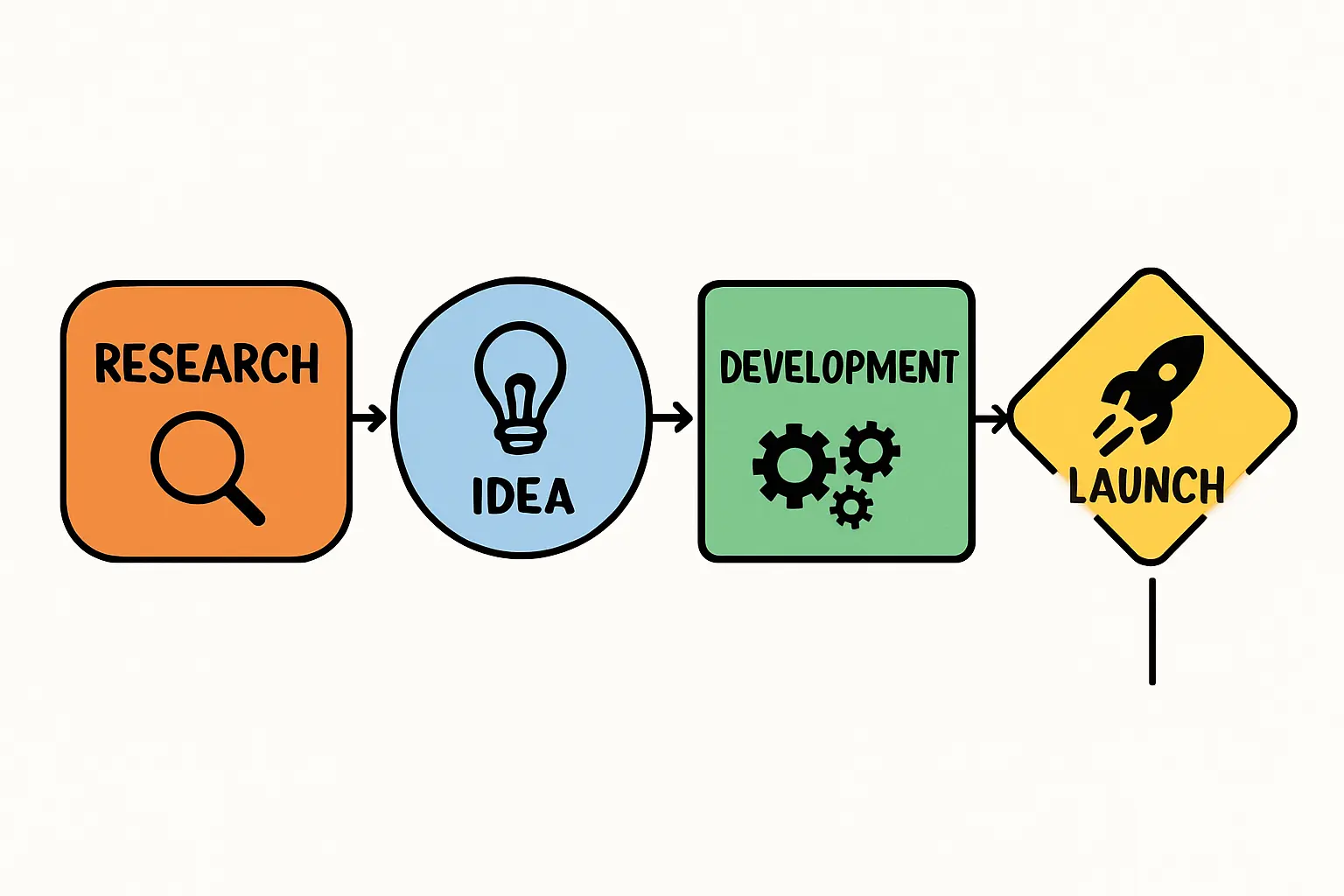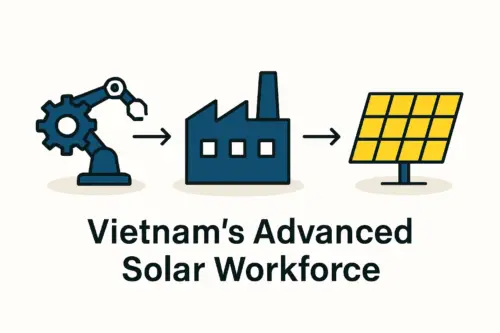For entrepreneurs considering the solar manufacturing sector, initial financial models can be daunting. A standard Corporate Income Tax (CIT) rate of around 20% is a significant recurring cost in any potential host country.
In a jurisdiction like Vietnam, however, that standard rate is just a starting point. For approved high-technology projects, such as solar module production, the effective tax rate over the first fifteen years can be dramatically lower, completely changing an investment’s financial viability.
This financial advantage is part of a deliberate industrial policy by the Vietnamese government to attract foreign direct investment into strategic sectors. Understanding the structure of these incentives—a combination of preferential rates, tax holidays, and subsequent reductions—is a critical first step for any serious investor. This article outlines the CIT incentive framework available to foreign investors establishing solar manufacturing facilities in Vietnam.
The Foundation: Vietnam’s Standard vs. Preferential Tax System
Vietnam maintains a standard CIT rate of 20% on corporate profits, a competitive rate within the ASEAN region. However, the government actively encourages investment in specific industries and locations through a system of preferential tax treatments.
Solar module manufacturing projects typically qualify under the ‘high-technology’ or ‘encouraged sectors’ category. This status grants access to a powerful, multi-layered incentive package that significantly reduces the tax burden during a project’s crucial early years. This allows a new enterprise to reinvest more of its earnings into scaling operations, research, and market development.
A Breakdown of Key CIT Incentives for Solar Investors
The core incentive package for a qualifying solar manufacturing project is typically structured as ‘4-9-15’: a four-year tax exemption, a nine-year tax reduction, and a fifteen-year preferential rate.
The Preferential Tax Rate: 10% for 15 Years
The foundational incentive is a preferential CIT rate of 10%—half the standard 20% rate. This favorable rate applies for 15 years, starting from the first year the project generates revenue. For a capital-intensive business, this long-term reduction creates a predictable and stable financial planning environment.
The Tax Exemption Period (Tax Holiday): 4 Years of 0% Tax
Within this 15-year preferential period, the most significant incentive is a complete tax exemption, or ‘tax holiday,’ for the first four years of profitability. Crucially, this holiday begins not from the start of operations, but from the first year the company generates taxable income. Vietnamese law also allows new businesses to carry forward losses for up to five years. A company can therefore offset initial startup losses against future profits, effectively delaying the start of its ‘first profitable year’ and maximizing the benefit of the tax holiday once the business is stable.
The Tax Reduction Period: 9 Years of 50% Reduction
Following the four-year tax exemption, the project enters a nine-year tax reduction phase. During this period, the company pays 50% of the applicable preferential rate.
Calculation: 50% of the 10% preferential rate = an effective tax rate of 5%.
Ready to make big Profits?
The solar Industry is Booming
WE HELP NEWCOMERS to the solar industry start their own solar module production line. Customers can make BIG PROFITS by selling modules and finding investors, without wasting money and time on things they don't need!
For nine consecutive years after the initial tax holiday, a solar manufacturing facility can operate with a CIT rate of just 5%—a quarter of the standard national rate.
This combination of incentives drastically improves a new manufacturing plant’s financial outlook. The substantial tax savings directly lower operational expenses, positively impacting the overall solar panel manufacturing plant cost and accelerating the timeline for achieving a return on investment.

Eligibility Criteria: Securing Your Project’s Incentive Status
Access to these powerful incentives is not automatic. It requires careful planning, adherence to specific government criteria, and a strategic project location.
Qualifying as a High-Technology Project
To be eligible for the most favorable incentives, a solar manufacturing project must be officially recognized as a ‘high-technology’ enterprise. This status is defined by Vietnam’s Law on High Technologies and typically requires the project to meet specific standards related to:
- Advanced Processes: Utilizing modern, automated, and environmentally sound production techniques.
- Quality Standards: Conforming to international technical and quality benchmarks (e.g., ISO, IEC).
- Research & Development: Allocating a certain percentage of annual revenue to R&D activities conducted within Vietnam.
The Importance of Location: Economic and High-Tech Zones
The most attractive incentive packages are often reserved for projects in designated geographical areas. These include:
- Economic Zones (EZs): Areas with special economic policies designed to attract investment.
- High-Tech Parks (HTPs): Zones like the Hoa Lac High-Tech Park in Hanoi or the Saigon High-Tech Park in Ho Chi Minh City, which offer superior infrastructure and a streamlined administrative environment.
- Disadvantaged Socio-Economic Areas: Locations the government is actively seeking to develop.

Investment Capital and Project Documentation
Securing government approval and incentive packages depends on comprehensive and accurate documentation. The investment registration certificate is a key legal document, and its application requires a detailed project proposal. This proposal must clearly outline the project’s scope, technology, environmental impact, and financial projections. A robust and credible solar manufacturing business plan is therefore not just a tool for securing financing; it is a foundational document for the entire government approval process.
A Practical Example: The Tax Journey of a New Solar Factory
To illustrate the impact of these incentives, let’s consider a hypothetical new solar module factory in Vietnam.
- Year 1-2: The factory is under construction and commissioning, incurring losses that can be carried forward.
- Year 3: The factory begins full production and generates its first taxable profit, triggering the 4-year tax holiday. CIT for Year 3 is 0%.
- Year 4-6: The company continues to operate profitably and expand its market share. CIT for these years remains 0%.
- Year 7: The 4-year tax holiday concludes, and the 9-year tax reduction period begins. The company’s CIT rate is now 5% (50% of the 10% preferential rate).
- Year 8-15: The 5% CIT rate applies throughout this period.
- Year 16-17: The 9-year reduction period ends. The company pays the full preferential rate of 10% for the final two years of its 15-year preferential term.
- Year 18 onwards: The preferential treatment period concludes, and the company’s profits are taxed at the standard 20% CIT rate.
This phased approach provides a long, predictable runway for a new venture to establish itself firmly in the market. The efficiency of the initial setup, often achieved through a turnkey solar panel production line, can shorten the pre-profitability period, allowing the business to begin its tax holiday sooner.

Frequently Asked Questions (FAQ)
What is Corporate Income Tax (CIT)?
Corporate Income Tax is a direct tax imposed on the net income or profit that enterprises make from their business activities.
How is the ‘first taxable income’ determined for the tax holiday?
The tax holiday begins in the first fiscal year the company declares a profit after carrying forward all allowable losses from previous years (up to a maximum of five years). If a company has losses in Years 1 and 2 but makes a profit in Year 3 that is smaller than the combined losses, it may still not have ‘taxable income’ until Year 4 or later.
Are these incentives guaranteed for all solar projects?
No. Incentives are granted through a formal application and approval process. The project must meet specific criteria for technology, location, and investment scale, and all documentation must be correctly submitted to the relevant licensing authorities.
Are there other non-tax incentives available?
Yes. Beyond CIT incentives, qualifying high-tech projects can also benefit from import duty exemptions for machinery and equipment for factory construction, as well as exemptions or reductions on land use fees or land rent.
What is a common mistake investors make when applying?
A frequent challenge, noted from project experience, is underestimating the level of detail required in the investment proposal and business plan. Incomplete documentation or a failure to clearly demonstrate how the project meets Vietnam’s high-technology criteria can lead to delays or a less favorable incentive package.
Conclusion: A Strategic Approach to Maximizing Incentives
Vietnam’s multi-layered tax incentive framework presents a compelling case for foreign investors in the solar manufacturing industry. The combination of a long-term preferential rate, a complete tax holiday, and an extended tax reduction period creates a highly favorable financial environment for new enterprises.
However, realizing these benefits requires diligent planning, a comprehensive understanding of legal requirements, and meticulous execution. For investors with a well-structured plan, Vietnam offers one of the most attractive platforms for establishing a solar manufacturing presence in Southeast Asia. For any potential investor, the logical next step is to translate these powerful incentives into a detailed financial model to quantify their precise impact on a project’s long-term profitability.






